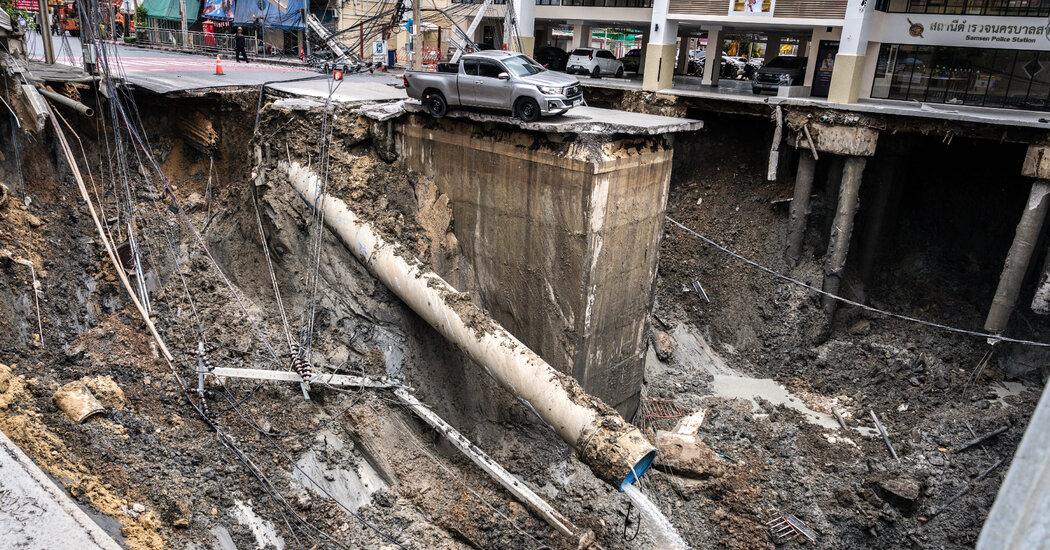Recent Bangkok Sinkhole Causes Major Disruption

Introduction
The recent emergence of a sinkhole in Bangkok has raised concerns among residents and city officials alike. This incident not only disrupts daily life but also sheds light on the pressing issue of urban infrastructure in one of Southeast Asia’s busiest cities. Understanding the implications of such incidents is crucial for planning future developments and enhancing public safety.
Details of the Incident
On October 15, 2023, a large sinkhole approximately 10 metres in diameter appeared suddenly on a busy street in the heart of Bangkok’s central district. This incident occurred during rush hour, leading to severe traffic congestion and road closures. Emergency services quickly cordoned off the area, ensuring the safety of passersby. Fortunately, there were no reported injuries, but the sinkhole has resulted in significant property damage and continues to disrupt local businesses.
Causes of the Sinkhole
Authorities attribute the sinkhole to a combination of factors, including heavy rain and the age of the city’s underground infrastructure. Experts suggest that years of urban expansion have put considerable strain on the sewage and drainage systems. Furthermore, the ongoing construction activities in the area may have exacerbated the situation by destabilising the soil.
Response from Officials
City officials have promised a thorough investigation into the cause of the sinkhole. In a press conference, Bangkok Governor Chadchart Suwangsing noted the urgent need for a comprehensive review of the city’s infrastructure resilience to prevent similar occurrences in the future. “This incident is a wake-up call for us; we must invest in our infrastructure to safeguard public safety and convenience,” he stated.
Public Impact
Residents and local businesses are feeling the immediate impact of the sinkhole, as the affected road has been a significant commercial artery. With shops forced to close temporarily, many business owners are anxious about potential losses. Commuters are facing longer travel times and detours, leading to frustration as they navigate the affected areas.
Conclusion
The Bangkok sinkhole incident illustrates a growing concern regarding urban infrastructure in rapidly developing cities. As the population continues to swell, the need for robust, well-maintained infrastructure becomes increasingly critical. Moving forward, local authorities must prioritise investments in public works to enhance safety and reliability, thereby ensuring that such disruptive events can be mitigated in the future. The resilience of cities like Bangkok will hinge on their ability to adapt to these challenges.
